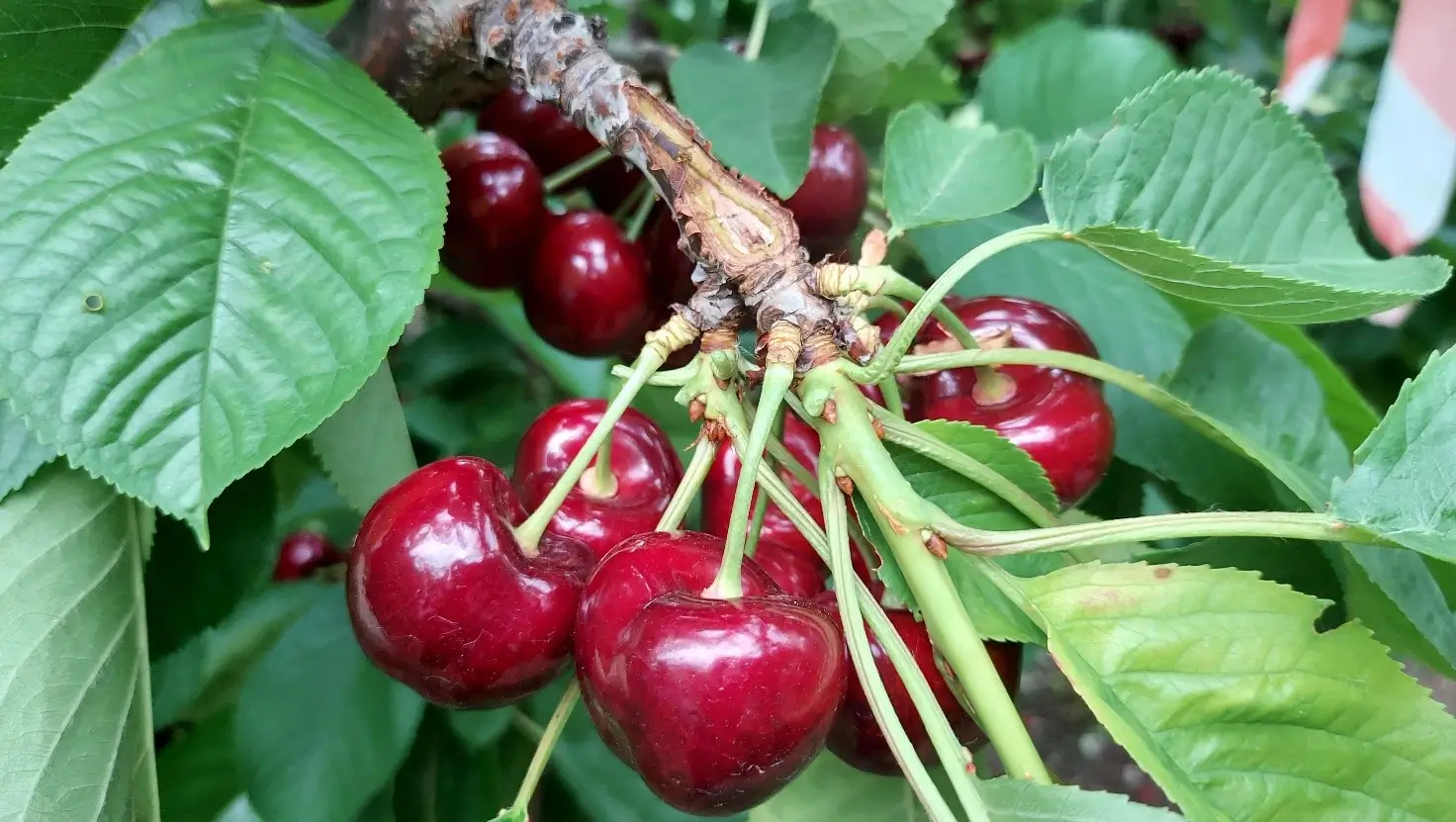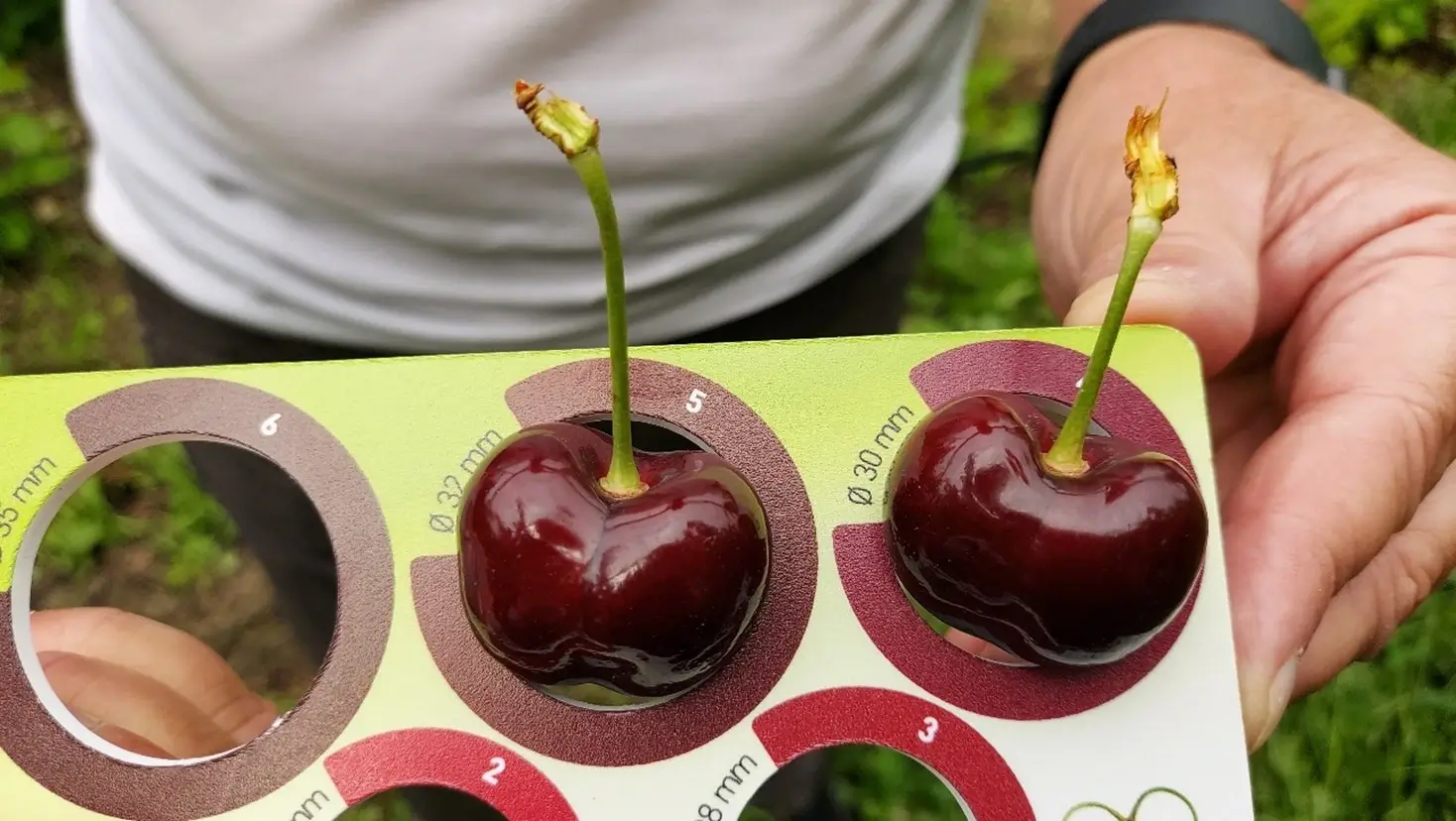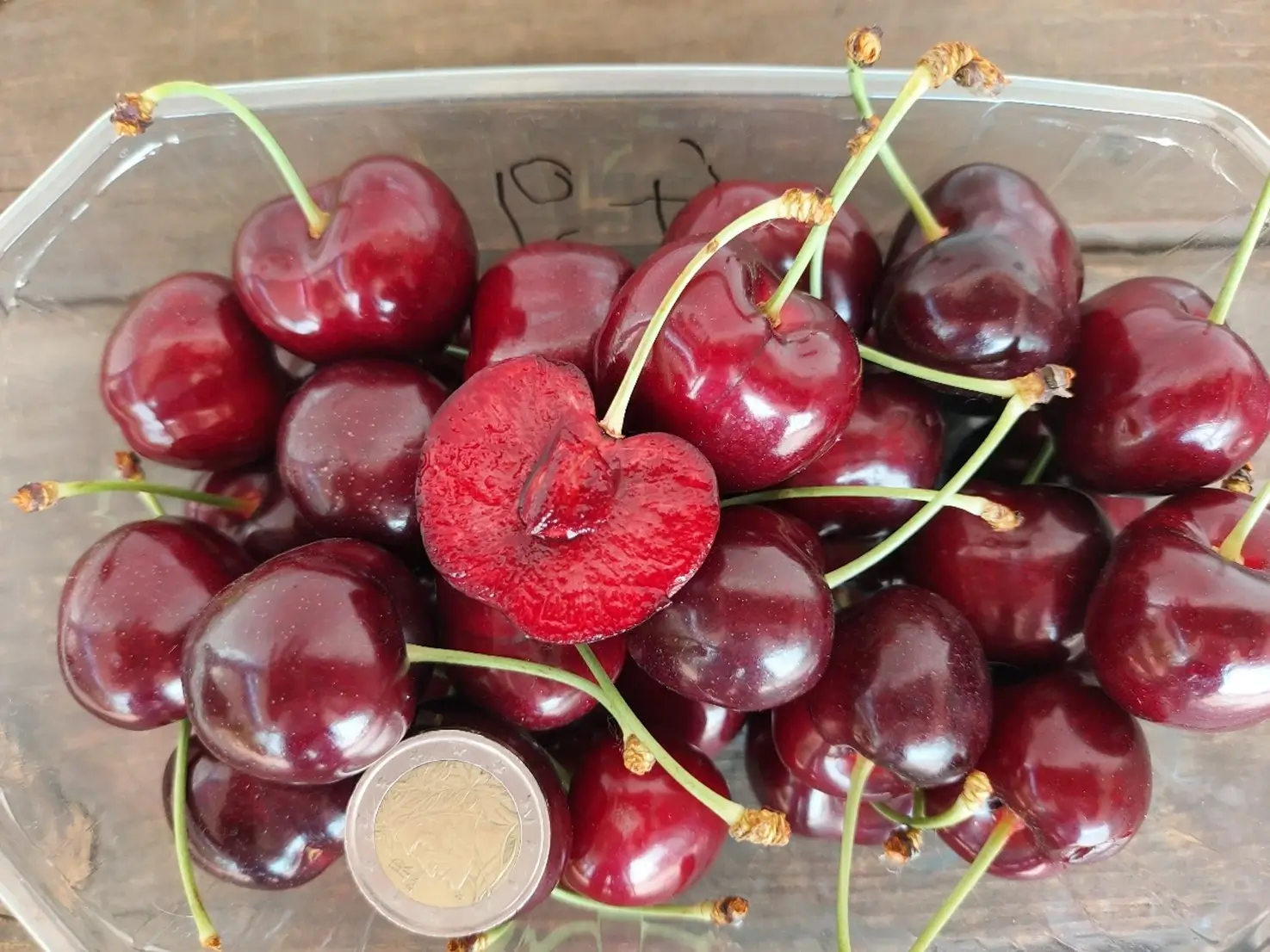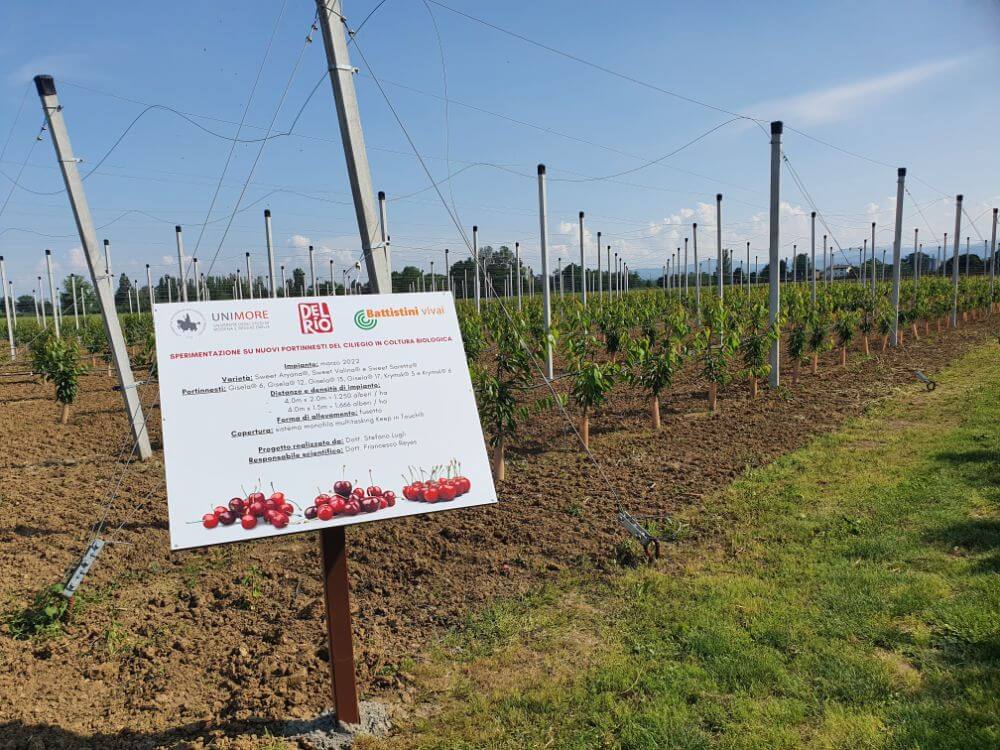Isired and Giored are two new CREA varieties released in 2023. Obtained by G. Baruzzi, W. Faedi, D. Giovannini and S. Sirri, they have been selected at the Magliano (FC) experimental farm of the Forlì site of the Research Centre for Olive, Fruit and Citrus Growing as CREA C1 (Isired) and CREA C2 (Giored) as part of a genetic improvement programme aimed at the lowland environments of the Romagna area.
Starting in 2014, trials were extended to other areas, including Vignola (MO), where the trees were trained in vase form on CAB 6P rootstock (P.cerasus), showing good and consistent productivity over the years.
In 2023, CREA filed a Community Plant Variety application for the two new accessions (n. 2023/1215 and 2023/1216) and subsequently initiated a public tender. As a result, the CIV Italian Nurseries Consortium acquired exclusive rights for testing, propagation, and global commercialization in partnership with INN (INTERNATIONAL NEW VARIETIES NETWORK).
Below are the main details about the two varieties:
ISIRED* (CREA C1)

Tree of medium-high vigor, spreading growth habit, with high and consistent productivity. The flowering period is early, either simultaneous with or slightly ahead of Burlat by one day. Isired starts fruiting moderately early, from the 4th year, and produces mainly on spurs but also on mixed shoots.
In the Vignola area, it ripens in the first ten days of June (+15 days compared to Burlat). Ripening on the tree is uniform—enabling a single harvest—and the ripe fruits maintain good quality on the tree for 4-5 days. The fruit is attractive, with a bright dark red color at maturity (CTIFL Scale 5), a cordiform-depressed shape, large size (80% of fruits are ≥30 mm), and thin skin.
The pulp is moderately firm (with an average hardness of 60 on the Durofel scale for fully ripe fruits) and juicy, with a well-balanced flavor (17.5°Brix and 196 meq/liter, average values from five years of evaluation in Vignola). Under rain-covered conditions, the variety has shown medium to medium-low susceptibility to cracking. Potential pollinators include Burlat, Vera, and Grace Star.

GIORED* (CREA C2)

Tree of medium vigor with a spreading growth habit, offering medium and consistent productivity. The flowering period is early, either simultaneous with or ahead of Burlat by a couple of days. Giored begins fruiting moderately early (from the 4th year) and produces mainly on spurs but also on mixed shoots. In the Vignola area, it ripens in the second ten days of June (+19 days compared to Burlat).
Ripening on the tree is uniform, allowing for a single harvest; the ripe fruits maintain good quality on the tree for 4-5 days. The fruit is attractive, with a bright dark red color at harvest (CTIFL Scale 5), a cordiform-depressed shape, large size (80% of fruits are ≥30 mm), and thin skin.
The pulp is moderately firm (with an average hardness of 52.0 on the Durofel scale for fully ripe fruits) and juicy, with an excellent flavor and sweet taste (20°Brix and 155 meq/liter, average values from five years of evaluation in Vignola). The stem is long, making harvesting easy. Under rainy conditions, the variety has shown medium-low to low susceptibility to cracking. Potential pollinators include Burlat, Vera, and Grace Star.

Images: CREA Forlì branch
Daniela Giovannini and Gianluca Baruzzi
CREA Forlì branch
Cherry Times - All rights reserved














